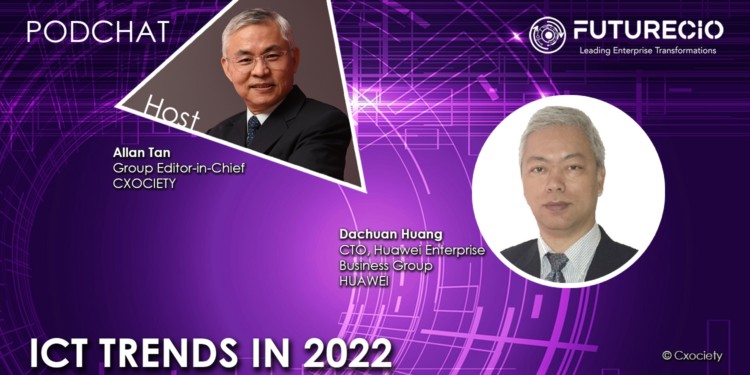Four new trends in cloud computing are continuing to expand the breadth of cloud offerings and capabilities, accelerating growth across all segments in the public cloud services market, according to Gartner. The four trends are cloud ubiquity, regional cloud ecosystems, sustainability and carbon-intelligent cloud, and cloud infrastructure and platform service (CIPS) providers’ automated programmable infrastructure.
“The economic, organizational and societal impact of the pandemic will continue to serve as a catalyst for digital innovation and adoption of cloud services,” said Henrique Cecci, senior research director at Gartner. “This is especially true for use cases such as collaboration, remote work and new digital services to support a hybrid workforce.”
Huang Dachuan, CTO of Huawei Enterprise Business Group, is of the opinion that all the technology related to accelerating the process of data will remain. This includes high-performance computing and the transaction data centre to support the financial business, they all adopt technologies like the Random Direct Memory Access (RDMA) to accelerate the throughput, input/output operations per second (IOPS) to process the data and parallel scalable distributed storage to store data and to protect the data.
He opined that high availability and business continuity are two mainstay considerations for use of data centres.
“Over the past several years we have evolved the synchronous copy and asynchronous copy for disaster recovery solution to achieve high availability. Today we still need to pursue new technology to achieve more, like the active-active and other more advanced technologies,” he continued.
A more recent trend is the pursuit of zero-carbon emission. He noted that Beijing released very strict policies to regulate Power Usage Effectiveness (PUE) for new data centres – a point vendors like Huawei are turning their attention to.
On the trend of agility, he opined that the future for the data centre will be autonomous.
The private data centre vs the public cloud
Asked whether, given the trend of more businesses moving their compute needs to the cloud (accelerated during the early days of the COVID pandemic), Huang argued that dialogues with CIOs suggest there remains preference to put mission-critical data on company-owned data centres.
He cited the need for high availability and to control (or reduce) latency.
In the cloud, it is difficult to guarantee the quality of service, particularly response time. He opined those industries like financial services require a very short response time. For this reason, banks will continue to put mission-critical applications on their data centres.
And for those that acknowledge the value of the cloud, he noted that in the pursuit of high availability, these enterprises are opting to use private cloud infrastructure instead of public cloud.
The one other area that (some) enterprises are staying with their data centre is to comply with the regulation. He observed one strategy that takes the best of both worlds – put the middleware, the application and the front-end on the public cloud, but keep sensitive data in a private cloud.
He is confident that data centres will remain in use for “a long time.”
Security
Huang said that security is always in the top three list of discussions around IT technologies. However, he acknowledged the challenge for CIOs to illustrate the value of security to the CFO (for example).
Compounding the issue of enforcing security policies and practices is the limited resources that CIOs face, particularly in challenging environments like the crisis.
“What is needed is a well-designed security plan that will not cost so much money while reducing security risks. How to design security, especially for a hierarchical and for a balanced design between the efficiency and security, is an ongoing challenge,” he opined.
Security needs to be deployed across the entire IT infrastructure from core to edge. “There are a lot of deployment points. How do you control these to eliminate potential productivity and efficiency issues?” he queried.
He believed that the answer may lie in a centralized management system that starts with the design and includes a periodical review of security rules (and practices) and reassess such rules in a centralised way.
Click on the PodChat player to listen to Huang share his views on ICT trends in 2022.
- At the data centre, what technologies will remain unchanged, and what technologies will become a key feature of the data centre of 2022?
- There is a lot of talk about public cloud computing, does this spell the end of the on-premises data centre or private cloud?
- We’ve started to hear CIOs speak of edge computing. What are the use cases for which edge computing is best used, and are enterprises in Asia adopting these today? If not now, at what point in the future will we see edge computing become the norm?
- Security is always going to be in the top 3 priorities of the CIO, CISO and CFO. Given all the priorities versus the limited budgets, how should CIOs work with CFOs to find the sweet spot in ICT strategy and spending?
- Some companies have adopted technologies into their business process by creating centres of excellence. How critical is centre of excellence in the successful adoption of digital transformation?
- Beyond culture, what will be key success criteria for the successful digital transformation of businesses in 2022?





